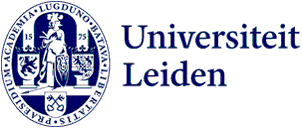
Status update in the evolutionary race between humans and resistant bacteria: two steps forward for us
A patent for what may be a potent, new antibiotic. And: a clear overview of promising approaches to overcome a crucial resistance tactic employed by bacteria. In the span of one week, two researchers from Leiden are receiving their PhDs, each of them on an important step in the battle against bacteria that are becoming increasingly resistant to antibiotics.
When Alexander Fleming discovered the first antibiotic penicillin in 1928, it seemed to be a fatal blow to disease-causing bacteria such as Salmonella and Meningococcus. In reality, it was just a new beginning in the ongoing evolutionary race between them and humans. Evolution is never complete and bacteria mutate rapidly, making them operate particularly deftly in this race. As long as we are liberally using different antibiotics, then, over time, bacterial strains that can resist such antibiotics will always emerge.
Professor of Biological Chemistry Nathaniel Martin represents Team Human in this evolutionary struggle. He is working on tactical moves to outsmart bacterial resistance. Now, he gets to wear his academic gown twice in one week to attend the doctoral defences of two researchers he supervised.
#1 Defeat the enzyme and consequently the bacterium
On January 17, Nicola Wade defends her thesis. She explored ways to make bacteria sensitive again to existing antibiotics. Martin explains, ‘With a specific enzyme, metallo-β-lactamase or MBL for short, more and more bacteria can simply destroy penicillin-like antibiotics.’ Extensive research has been conducted on molecules that can block these MBL enzymes. ‘Nicola compiled a comprehensive overview of the most promising molecules. The application of MBL blockers is a strategy that pharma companies are now actively pursuing. Nicola’s work provides important insights into which molecules are most promising.’
#2 Patent for a promising new substance
On January 23, Karol Al Ayed will defend his dissertation on another attack strategy. Martin says: ‘Based on Karol’s research, we successfully applied for a patent on a new class of antibiotics.’ During his PhD, Al Ayed investigated a promising new antibacterial compound called laterocidine, identified by researchers in Hong Kong 2018, but which is difficult to isolate in large quantities from natural sources. Martin adds: ‘In our department we can synthesize these types of molecules entirely from scratch.’ Al Ayed was not always able to synthesize laterocidine, but also analogues that are more stable and may be even more promising as a medicine. ‘They have proven effective and safe in mice. Now, the next step is to determine if these substances are also effective and safe in humans.’ This will take several years, but Team Human has something essential in their hands.

Gram-negative bacteria: particularly challenging to address
In both cases, the research carried out by the doctoral candidates that Martin supervised focused on Gram-negative bacteria. Because they contain a protective outer membrane, these bacteria are less prone to staining with crystal violet dye, an effect observed by Hans Christian Gram in 1884. In contrast, so-called Gram-positive bacteria colour blue-purple when treated with the same dye. Gram-positives lack an outer membrane allowing the dye access to their cell wall that can bind and absorb the dye crystal violet. Martin explains, ‘while Gram-positive bacteria are more common, gram-negatives are harder to kill and are more often multi-drug resistant.’
It is for this reason that the World Health Organization recently included three particularly dangerous Gram-negative species, Acinetobacter, Pseudomonas and Enterobacteriaceae among the most threatening on their Priority Pathogen List. ‘New antibiotics that can treat infections with such bacteria are desperately needed and remain a focus of my lab’s research programme.’
Text: Rianne Lindhout
